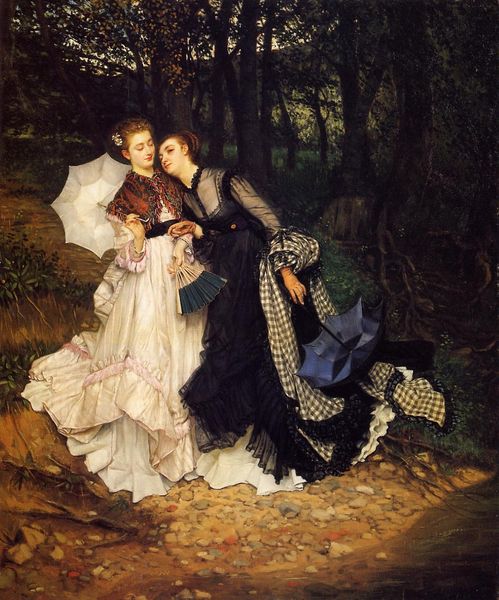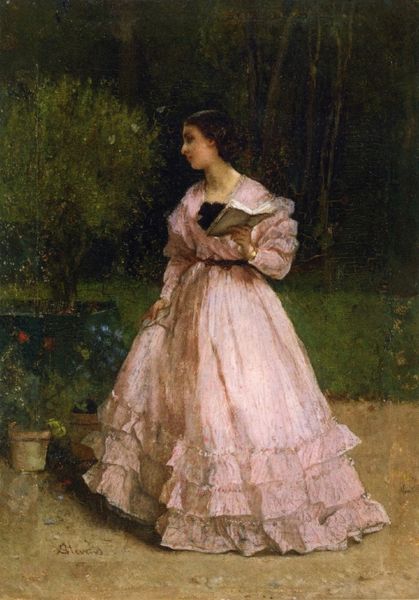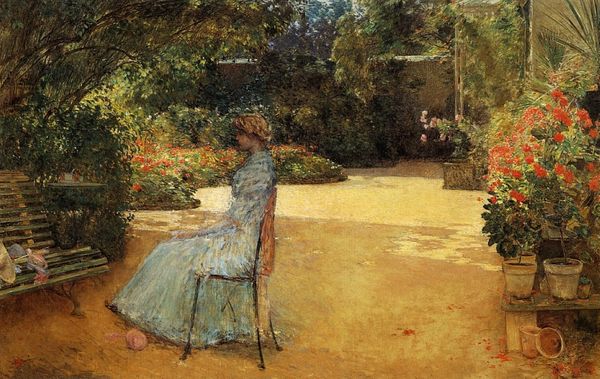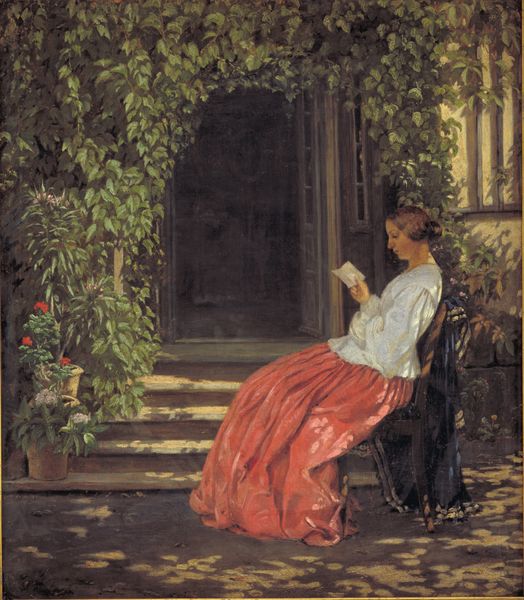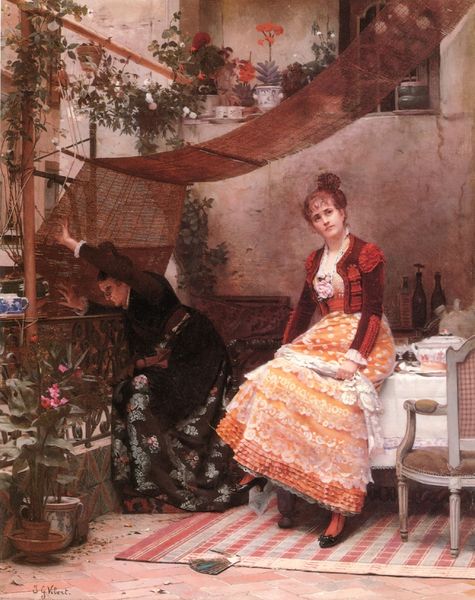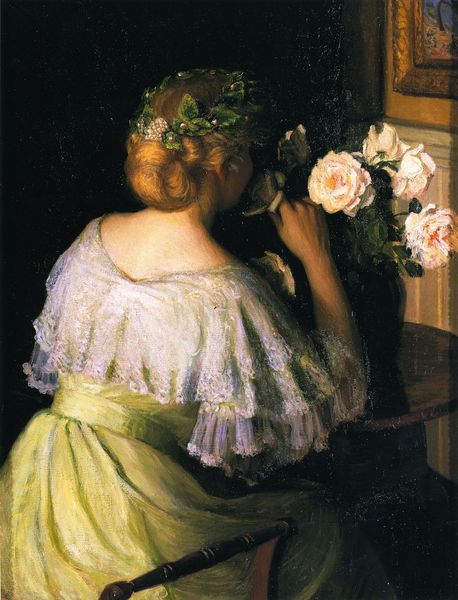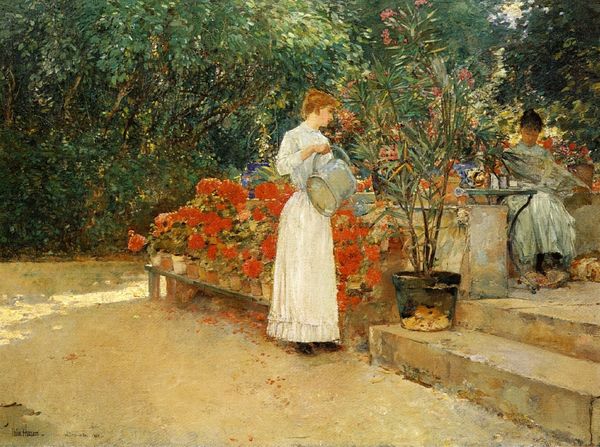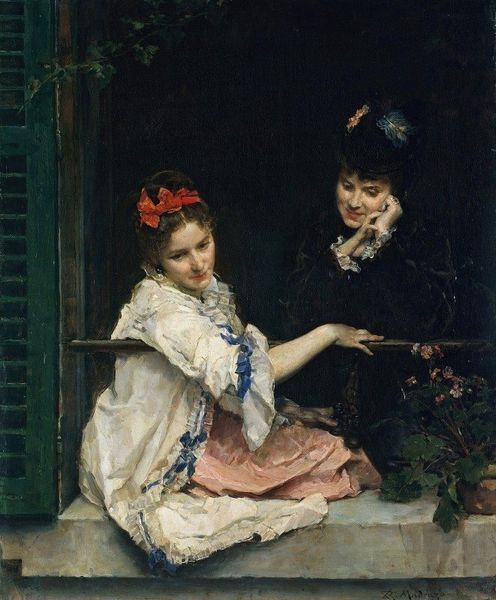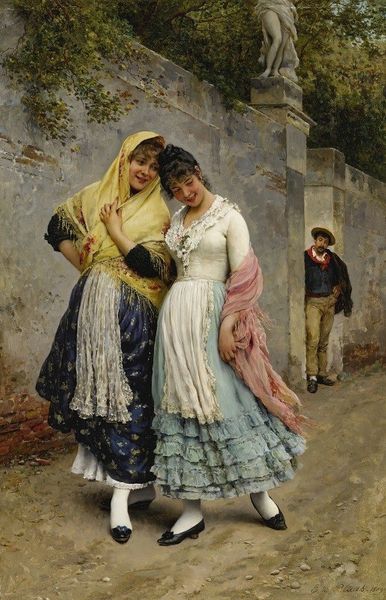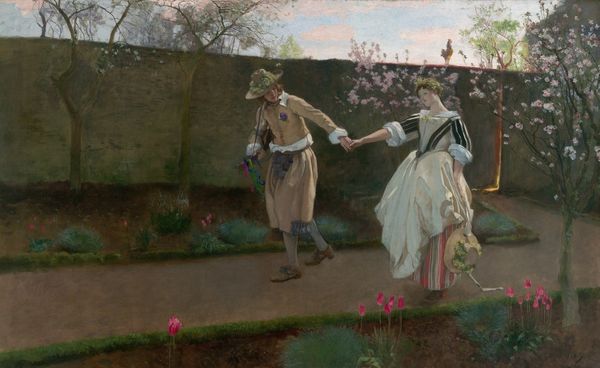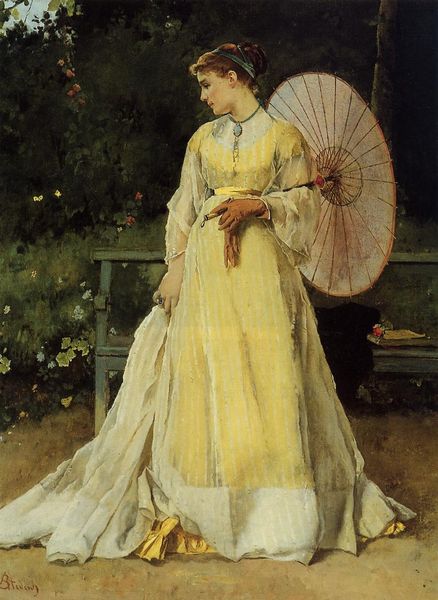
Dimensions: 24 x 30.5 cm
Copyright: Public domain
Editor: Here we have Giuseppe de Nittis’s "Back From Dance," created around 1870, a genre painting rendered in oil paint. I'm struck by the subjects' luminous gowns, and how their texture and movement is palpable even today. What can you tell us about this piece? Curator: Well, let’s consider the material reality of those gowns. De Nittis meticulously layers the oil paint, but what kind of labour went into the creation of those fabrics? What socio-economic structures enabled their existence and the wearers' ability to enjoy such finery after an evening of dance? Think of the seamstresses, the textile workers... Editor: I hadn’t thought of it that way, but I see what you mean. It's easy to get lost in the beauty and overlook the material origins. What about the act of painting itself? Curator: Precisely. Observe the impasto in the foliage versus the smooth application on the dresses. How does this variation in technique reinforce a class-based understanding of “nature” versus “culture”? Where was this painting produced and consumed? And how might the 'plein-air' tag connect to contemporary industrialization of materials available to the artist at this time? Editor: That makes me think about the commodification of leisure and beauty, how art itself becomes a product within this cycle. Is the artist, in some way, commenting on this very system? Curator: Possibly. It is also crucial to remember this piece itself became a material object—bought, sold, and circulated. Analyzing art this way makes us think beyond simple representation and connect with the social structures of the era. Editor: This perspective completely transforms how I perceive the painting. It's not just a pretty picture, but a glimpse into a whole web of production and consumption. Curator: Exactly. It’s about understanding the artwork as a product and a reflection of its material circumstances, prompting us to consider our own consumption and its impact on art today.
Comments
No comments
Be the first to comment and join the conversation on the ultimate creative platform.
